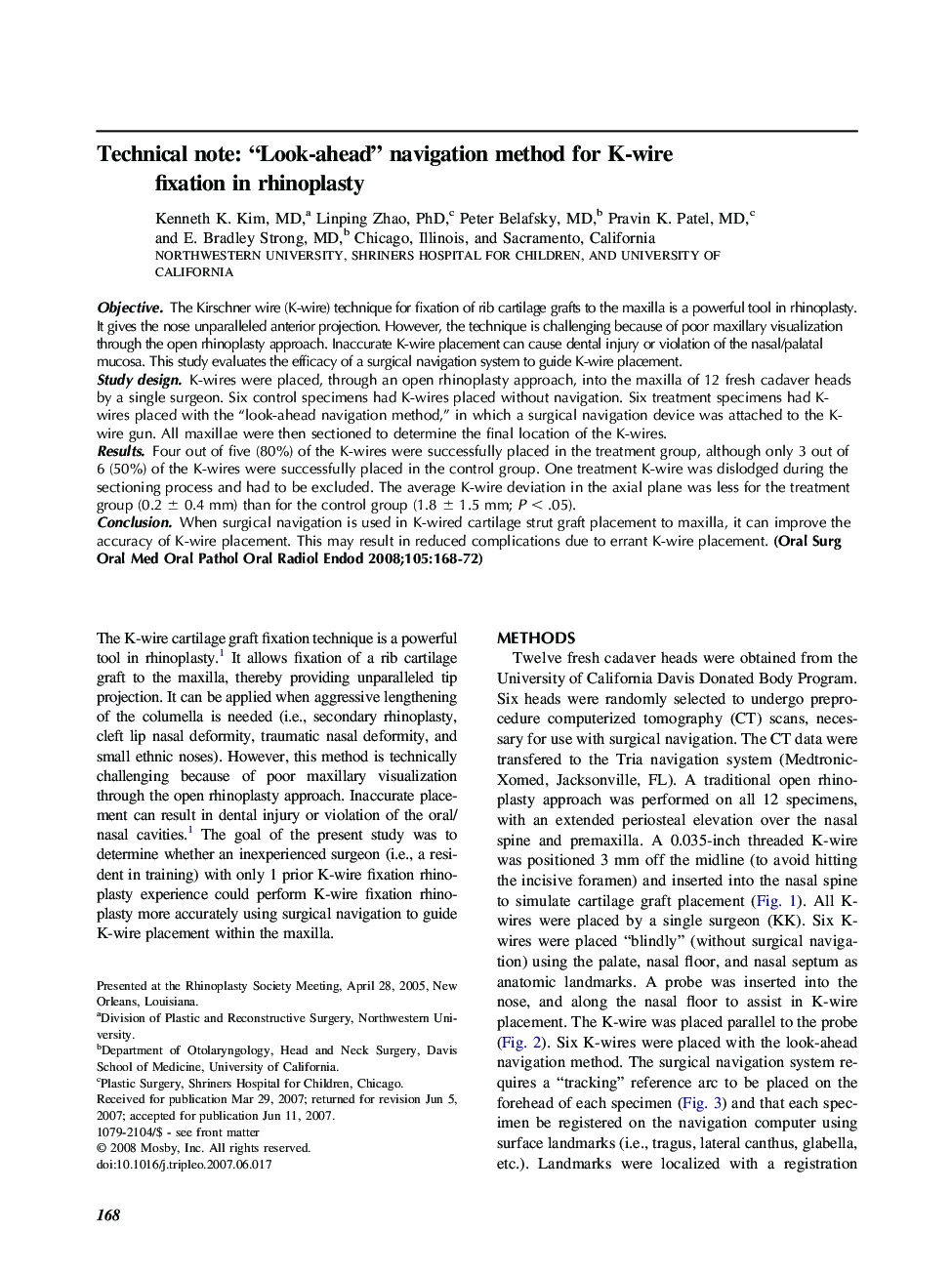| Article ID | Journal | Published Year | Pages | File Type |
|---|---|---|---|---|
| 3168932 | Oral Surgery, Oral Medicine, Oral Pathology, Oral Radiology, and Endodontology | 2008 | 5 Pages |
ObjectiveThe Kirschner wire (K-wire) technique for fixation of rib cartilage grafts to the maxilla is a powerful tool in rhinoplasty. It gives the nose unparalleled anterior projection. However, the technique is challenging because of poor maxillary visualization through the open rhinoplasty approach. Inaccurate K-wire placement can cause dental injury or violation of the nasal/palatal mucosa. This study evaluates the efficacy of a surgical navigation system to guide K-wire placement.Study designK-wires were placed, through an open rhinoplasty approach, into the maxilla of 12 fresh cadaver heads by a single surgeon. Six control specimens had K-wires placed without navigation. Six treatment specimens had K-wires placed with the “look-ahead navigation method,” in which a surgical navigation device was attached to the K-wire gun. All maxillae were then sectioned to determine the final location of the K-wires.ResultsFour out of five (80%) of the K-wires were successfully placed in the treatment group, although only 3 out of 6 (50%) of the K-wires were successfully placed in the control group. One treatment K-wire was dislodged during the sectioning process and had to be excluded. The average K-wire deviation in the axial plane was less for the treatment group (0.2 ± 0.4 mm) than for the control group (1.8 ± 1.5 mm; P < .05).ConclusionWhen surgical navigation is used in K-wired cartilage strut graft placement to maxilla, it can improve the accuracy of K-wire placement. This may result in reduced complications due to errant K-wire placement.
